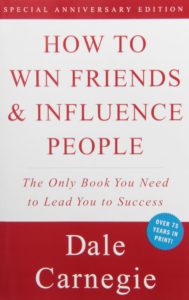The 7 Best Books on How to Give Feedback

Ever since I got burned by not candidly sharing feedback earlier in my career, I've become obsessed with the science and art of giving feedback. I've consumed numerous books and articles about the topic, and even personally taught several classes on feedback as I've learned more.
Here are the seven best books I've found on how to give effective feedback. I've ranked them in order of which ones personally helped me the most, but you can't go wrong with any of these.
Book Summary
Former Netflix Chief Talent Officer Patty McCord loves to buck standard HR conventions, and she repeatedly urges readers to throw out the rule book. In Powerful, McCord shares how she and the Netflix executive team iterated upon the company's culture to build an engaging, productive work environment. Even though this book isn't explicitly written about feedback, Netflix's strong culture of feedback and candor underpins the entire book.
“One of the most important insights anyone in business can have is that it’s not cruel to tell people the truth respectfully and honestly. To the contrary, being transparent and telling people what they need to hear is the only way to ensure they both trust you and understand you.” -Patty McCord
Key Insights
- “We wanted people to practice radical honesty: telling one another, and us, the truth in a timely fashion and ideally face to face. We wanted people to have strong, fact-based opinions and to debate them avidly and test them rigorously.”
- “Again and again at Netflix I saw that people rebounded quickly from the initial shock of receiving negative feedback and learned not only to appreciate it but to deliver it themselves much more consistently and thoughtfully.”
- “We wanted all of our people to challenge us, and one another, vigorously. We wanted them to speak up about ideas and problems; to freely push back, in front of one another and in front of us. We didn’t want anyone, at any level, keeping vital insights and concerns to themselves.”
Book Summary
Don't be deceived by the unflattering title and cover of the book. The book is packed with insights on how to communicate clearly and authentically. But it goes deeper than just communication. Rosenberg shares practical advice on how to be a better human: how to listen for people's true needs and meet those needs with love and respect. This book is 1/2 Dale Carnegie and 1/2 Mother Theresa, and it's a wicked combo. This is one of the few books I've read that made me re-think the way I communicate daily with everyone in my life.
“Most of us grew up speaking a language that encourages us to label, compare, demand, and pronounce judgments rather than to be aware of what we are feeling and needing.” -Marshall Rosenberg
Key Insights
- “NVC (non-violent communication) heightens our awareness that what others say and do may be the stimulus, but never the cause of our feelings. We see that our feelings result from how we choose to receive what others say and do, as well as from our particular needs and expectations in that moment...We are led to accept responsibility for what we do to generate our own feelings.”
- “One kind of life-alienating communication is the use of moralistic judgments that imply wrongness or badness on the part of people who don’t act in harmony with our values. Such judgments are reflected in language: ‘The problem with you is that you’re too selfish.’ ‘She’s lazy.’ ‘They’re prejudiced.’ ‘It’s inappropriate.’ Blame, insults, put-downs, labels, criticism, comparisons, and diagnoses are all forms of judgment...When we speak this language, we judge others and their behavior while preoccupying ourselves with who’s good, bad, normal, abnormal, responsible, irresponsible, smart, ignorant, etc.”
- “It is my belief that all such analyses of other human beings are tragic expressions of our own values and needs.”
Book Summary
Kim Scott served as a high-powered leader at Google and Apple before co-founding the Radical Candor executive education company. Her goal in this book is to help leaders strike the appropriate balance between caring personally and challenging directly rather than falling into the traps of what she calls Obnoxious Aggression, Manipulative Insincerity, or Ruinous Empathy. This book became so wildly popular that it was even mockingly honored in a tv episode of Silicon Valley. (As an author, that's how you know you've made it, right?!)
“At Apple, as at Google, a boss’s ability to achieve results had a lot more to do with listening and seeking to understand than it did with telling people what to do; more to do with debating than directing; more to do with pushing people to decide than with being the decider; more to do with persuading than with giving orders; more to do with learning than with knowing.” -Kim Scott
Key Insights
- “Make sure that you are seeing each person on your team with fresh eyes every day. People evolve, and so your relationships must evolve with them. Care personally; don’t put people in boxes and leave them there.”
- “If you find you cannot be Radically Candid with your boss, I recommend that you consider finding a new job with a new boss.”
- “If you can build a trusting relationship with people so that they feel free at work, then they’re much more likely to do the best work of their lives. But you’re not 'getting it out of them'; you’re creating the conditions for them to bring it out of themselves."
Book Summary
How to Win Friends and Influence People offers a very different stance on feedback than every other book I included in this article, and Dale Carnegie's insights are a great complement to the others. His overarching belief is that you get much more from people with praise than you do with criticism, so he recommends correcting others sparingly and leaning much harder into praise. This book completely redefined the way I look at leadership, and Carnegie's writing has had a similar impact on friends of mine as well. You'd be hard-pressed to find a better primer on leadership and communication.
“Instead of condemning people, let’s try to understand them. Let’s try to figure out why they do what they do.” -Dale Carnegie
Key Insights
- “About 15 percent of one’s financial success is due to one’s technical knowledge and about 85 percent is due to skill in human engineering—to personality and the ability to lead people.”
- “Criticism is futile because it puts a person on the defensive and usually makes him strive to justify himself. Criticism is dangerous, because it wounds a person’s precious pride, hurts his sense of importance, and arouses resentment.”
- “I consider my ability to arouse enthusiasm among my people the greatest asset I possess, and the way to develop the best that is in a person is by appreciation and encouragement. There is nothing else that so kills the ambitions of a person as criticisms from superiors. I never criticize anyone. I believe in giving a person incentive to work. So I am anxious to praise but loath to find fault. If I like anything, I am hearty in my approbation and lavish in my praise.” -Charles Schwab
Book Summary
Susan Scott offers countless insights for how to have tough conversations with colleagues, friends, and family. She encourages all leaders to constantly "interrogate reality" and ensure you understand the "ground truth" in your organization (how things really are rather than how they seem). Fierce Conversations is impressive in how broadly its wisdom can be applied. Scott not only explains how to have better 1-on-1 conversations but also how to encourage more ground-level honesty across entire teams and companies.
“Success occurs one conversation at a time.” -Susan Scott
Key Insights
- “In its simplest form, a fierce conversation is one in which we come out from behind ourselves into the conversation and make it real. While many are afraid of ‘real,’ it is the unreal conversation that should scare us to death. Whoever said talk is cheap was mistaken. Unreal conversations are incredibly expensive for organizations and for individuals.”
- “During a fierce conversation, my role is not to say what is easy to say or what we all can say, but to say what we have been unable to say. I try to pay attention to things that may pass unobserved by others and bring them out into the open. The most valuable thing any of us can do is find a way to say the things that can’t be said.”
- “People deserve to know exactly what is required of them, how and on what criteria they will be judged (including attitude), and how they are doing. Praise is essential when deserved. And when you praise, keep that conversation separate, focused, and clear. Reserve your praise for specific behaviors and results deserving of celebration and congratulation. Do not use praise as a lead-in to a confrontation.”
Book Summary
Stone, Patton, and Heen spent 15 years researching communication as part of the Harvard Negotiation Project. In Difficult Conversations, they share that research and provide a memorable mental model for how to navigate tough conversations in all facets of life. I've already been able to apply numerous principles from this book in my daily life. It's an incredible resource for anyone interested in improving their ability to listen effectively, give feedback, manage conflict, negotiate, and de-escalate tough situations.
“The gap between what you’re really thinking and what you’re saying is part of what makes a conversation difficult.” -Stone, Patton, and Heen
Key Insights
- “To make the structure of a difficult conversation visible, we need to understand not only what is said, but also what is not said. We need to understand what the people involved are thinking and feeling but not saying to each other. In a difficult conversation, this is usually where the real action is.”
- “What I think about your intentions will affect how I think about you and, ultimately, how our conversation goes. The error we make in the realm of intentions is simple but profound: we assume we know the intentions of others when we don’t. Worse still, when we are unsure about someone’s intentions, we too often decide they are bad.”
- “Don’t worry about accepting or rejecting the other person’s story. First work to understand it. The mere act of understanding someone else’s story doesn’t require you to give up your own.”
Book Summary
I don't re-read books often, but I made an exception for this one. I've now read it three times, and I plan to revisit this book for the rest of my life. It's honestly that good. Crucial Conversations is packed with insights into how to deliver a tough message. The most valuable lesson I learned was the tendency of the human brain to craft biased hero/villain stories amid periods of conflict with others. I draw upon concepts from this book every day in my interactions with my colleagues, spouse, and friends.
“When you find yourself labeling or otherwise vilifying others, stop and ask: 'Why would a reasonable, rational, and decent person do what this person is doing?'” -Patterson, Grenny, McMillan, and Switzler
Key Insights
- “Although it’s true that there are times when we are merely bystanders in life’s never-ending stream of head-on collisions, rarely are we completely innocent. More often than not, we do something to contribute to the problems we’re experiencing."
- “Just after we observe what others do and just before we feel some emotion about it, we tell ourselves a story. That is, we add meaning to the action we observed."
- “The best at dialogue speak their minds completely and do it in a way that makes it safe for others to hear what they have to say and respond to it as well. They are both totally frank and completely respectful.”
If you want to get better at giving feedback, I highly recommend checking out these seven books.
And if you want more feedback tips (both giving and receiving), read my personal tips here:
Want to become a stronger leader?
Sign up to get my exclusive
10-page guide for leaders and learners.










